Complete Solutions to physics of chapter RAY OPTICS of Class 12 book with complete answers and questions
| Class 12 | PHYSICS |
| Chapter | RAY OPTICS |
| DISHA | physics |
| Number Of Questions | 74 |
| Academic Year | 2023-24 |
A thin prism of angle `A=60^(@)` produces a deviation `d=30^(@)`. Find the refractive index of the material of prism.
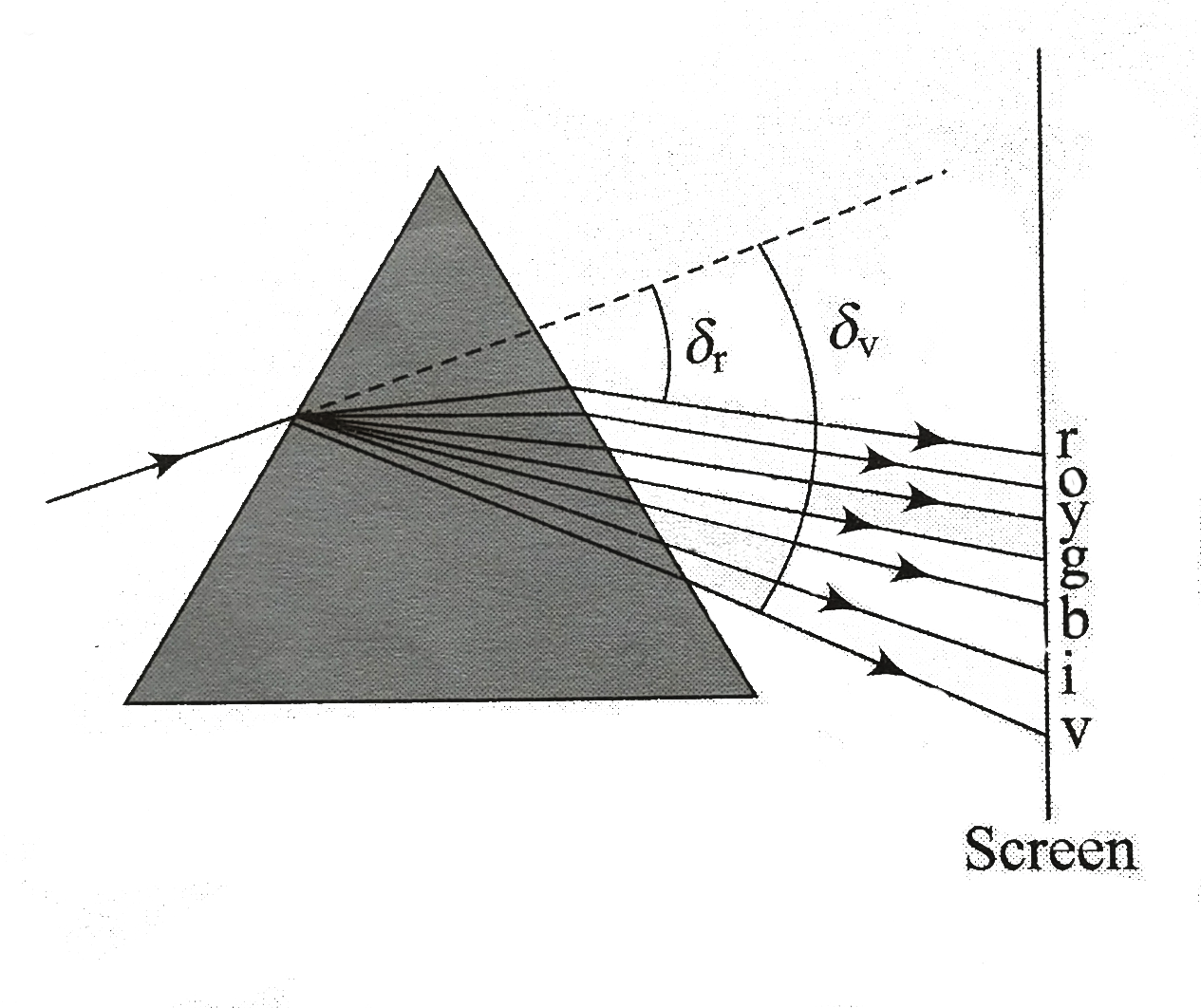

View SolutionA ray of light is incident at an angle of `60^@` on the face of a prism having refracting angle `30^@.` The ray emerging out of the prism makes an angle `30^@` with the incident ray. Show that the emergent ray is perpendicular to the face through which it emerges and calculate the refractive index of the material of prism.
View SolutionLight of wavelength `6000Å` enters from air into water (a medium of refractive index 4/3). Find the speed and wavelength [c = 3 × 108 m/s
View SolutionA ray of light falls on a glass plate of refractive index `mu=1.5`.
What is the angle of incidence of the ray if the angle between the reflected and
refracted rays is `90^@`?
View SolutionAn optical fibre consists of core of `mu_(1)` surrounded by a cladding of `mu_(2) lt mu_(1)`. A beam of light enters from air at an angle `alpha` with axis of fibre. The highest `alpha` for which ray can be travelled through fibre is
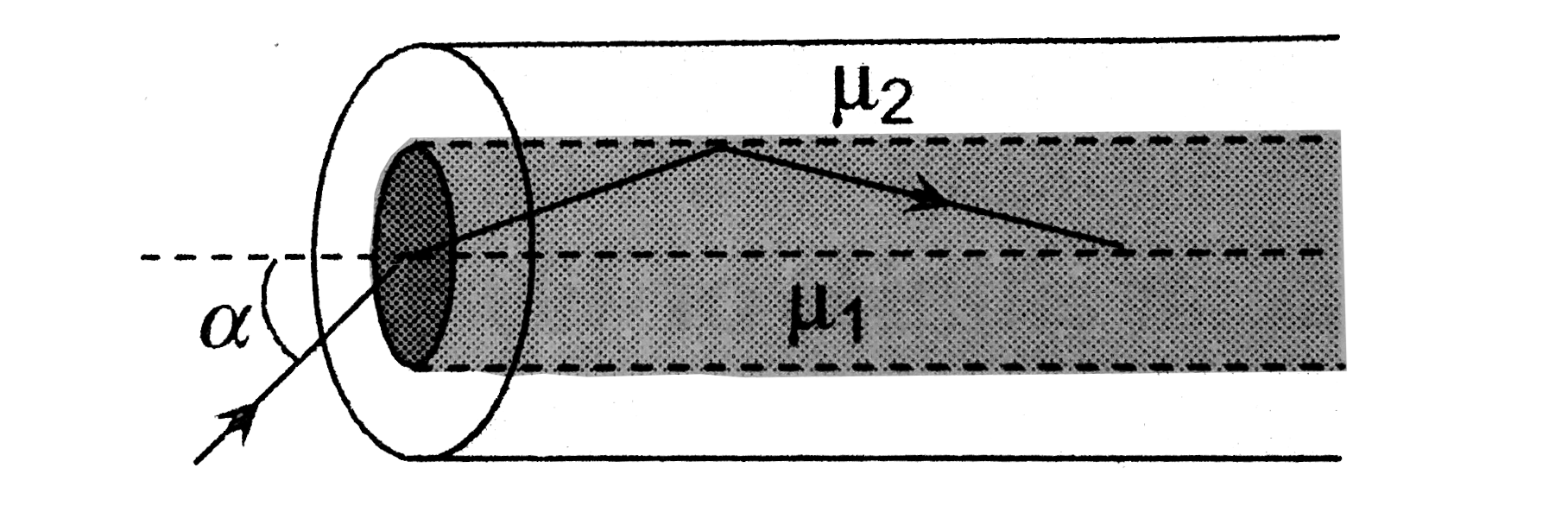
View SolutionA glass plate 4 mm thick is viewed from the above through a microscope. The microscope must be lowered 2.58 mm as the operator shifts from viewing the top surface to viewing the bottom surface through the glass. What is the index of refraction of the glass ?
View SolutionA vertical microscope is focussed on a point at the bottom of an empty tank. Water (`mu = 4//3`) is then poured into the tank. The height of the water column is 4cm. Another lighter liquid, which does not mix with water and which has refractive index 3/2 is then poured over the water.The height of liquid column is 2cm. What is the vertical distance through which the microscope must be moved to bring the object in focus again ?
View SolutionLight from a sodium lamp `(lambda_0=589 nm)` passes through a tank of glycerin (refractive index `=1.47`) `20m` long in a time `t_1.` If it takes a time `t_2` to transverse the same tank when filled with carbon disulfide (index`=1.63`), determine the difference `t_2-t_1.`
View SolutionA light beam is traveling from Region I to region IV (refer figure). The refractive indices in Region I, II, III, and IV are `n_(0), n_(0)//2,n_(0)//6 and n_(0)//8` , respectively. The angle of incidence `theta` for which the beam just misses entering Region IV is
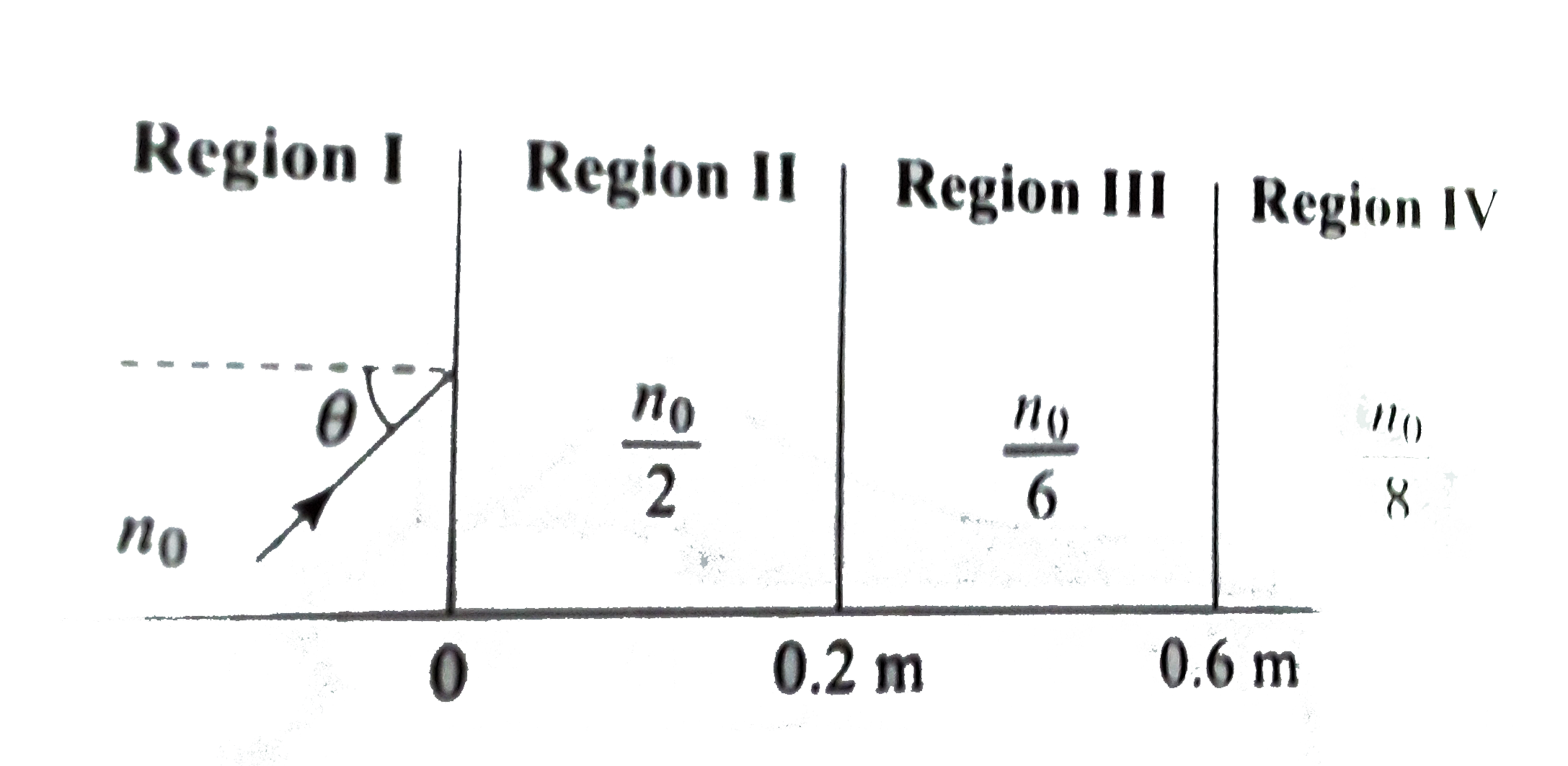
View SolutionThe refractive index of the material of a prism is `sqrt(2)` and its prism angle is `30^(@)` One of its refracting faces is polished .The incident beam of light will return back for the angle of incidence
View SolutionWhen light rays are incident on a prism at an angle of `45^(@)`, the minimum deviation is obtained. If refractive index of the material of prism is `sqrt(2)`, then the angle of prism will be
View SolutionA glass prism of refractive index 1.5 and angle of prism `6^(@)` is put in contact with another prism of refractive index 1.6 when a ray of light is made incident on this combination normally then it emerges out undeviated. The angle of second prism will be
View SolutionCalculate the dispersive power for crown glass from the given data
`mu_(v)=1.523` and `mu_(r)=1.5145`.
View SolutionCalculate the angle of a prism of dispersive power `0.021` and refractive index `1.53` to form an achromatic combination with prism of angle `4.2^@`, and dispersive power `0.045`, having refractive index `1.65`. Find also the net deviation.
View SolutionA ray of light falls on a normally on a refracting face of a prism. Find the angle of prism if the ray just fails to emerge from the prism `(mu=3//2).`
View SolutionThe refractive indices of material of a prism for blue and red colours are 1.532 and 1.514 respectively. Calculate angular dispersion produced by the prism if angle of prism is `8^(@)`
View SolutionA ball is dropped from a height of 20 m above the surface of water in a lake. The refractive index of water is 4.3. A fish inside the lake, in the line of fall of the ball, is looking at the ball. At an instant, when the ball is 12.8 m above the water surface, the fish sees the speed of the ball as `[Take _(g)=10m/s^(2).]`
View SolutionA glass prism of refractive index 1.5 is immersed in water (refractive index 4/3). A light beam incident normally on the face AB is totally reflected to reach on the face BC if.
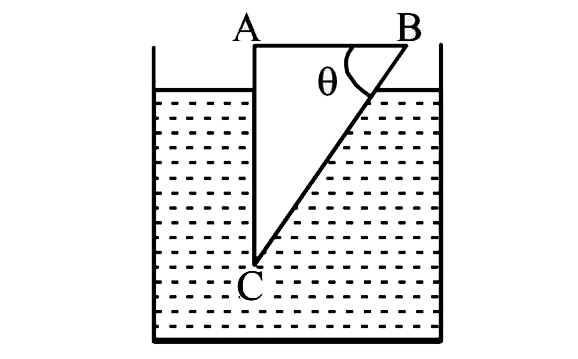
View SolutionA prism having an apex angle of `4^@` and refractive index of 1.50 is located in front of a vertical plane mirror as shown in the figure. A horizontal ray of light is incident on the prism. The total angle through which the ray is deviated is:
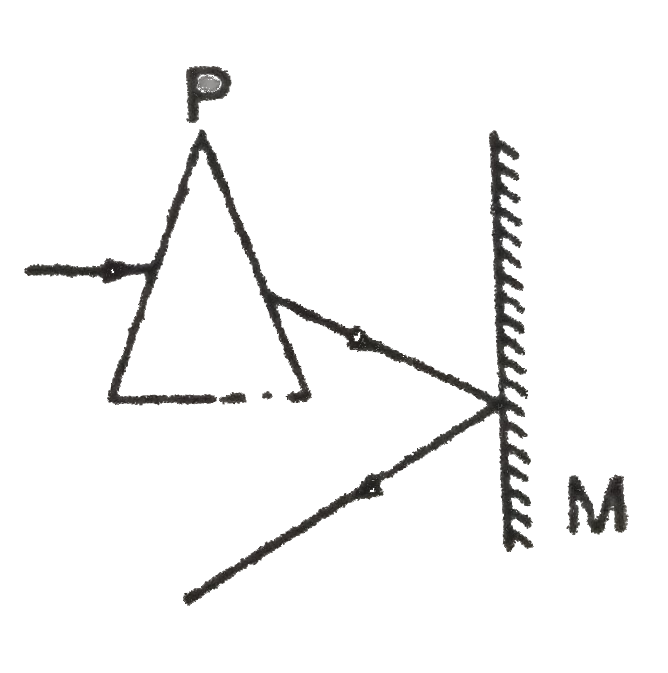
View SolutionLet the x-z plane be the boundary between two transparent media. Medium 1 in `zge0` has a refractive index of `sqrt2` and medium 2 with `zlt0` has a refractive index of `sqrt3`. A ray of light in medium 1 given by the vector `vecA=6sqrt3hati+8sqrt3hatj-10hatk` is incident on the plane of separation. The angle of refraction in medium 2 is:
View SolutionDispersive power does not depend upon
View SolutionAssertion `:` There is no dispersion of light refracted through a rectangular glass slab.
Reason `:` Dispersion of light is the phenomenon of splitting of a beam of white light into its constituent colours.
View SolutionAssertion `:` Dispersion of light occurs because velocity of light in a material depends upon its colour.
Reason `:` The dispersive power depends only upon the material of the prism, not upon the refracting angle of the prism
View SolutionA glass slab is placed over a page in which letters are printed in different colours. Will the image of all the letters lie in the same plane ?
View SolutionFind the number of images formed by two mutually perpendicular mirrors.
View SolutionThe angle q between two plane mirrors producing five images of a given object is given by.
View SolutionTwo plane mirrors are inclined at angle `theta`.A ray of light is incident on one mirror at an angle of incidence.i.The ray is reflected from this mirror,falls on the second mirror from where it is reflected parallel to the first mirror .What is the value of i,the angle of incident in term of `theta`?
View SolutionA girl stands at a distance 30 cm from the mirror. She is able to see her erect image but of 1/5 height of actual height. The mirror will be :
View SolutionAn object is placed in front of a convex mirror at a distance of 50cm. A plane mirror is introduced covering the lower half of the convex mirror. If the distance between the object and the plane mirror is 30cm, it is found that there is no parallax between the images formed by the two mirrors. What is the radius of curvature of the convex mirror?
View SolutionTwo plane mirror are inclined at an angle of`30^(@)`.Then the first four images of an object`O`placed between the two mirrors are correctly represented by
View SolutionThe plane of a mirror makes an angle of 30º with horizontal. If a vertical ray is incident on a mirror, then what is the angle between mirror and reflected ray ?
View SolutionTwo plane mirrors are placed at an angle `theta` so that a ray parallel to one mirror gets reflected parallel to second mirror after two consecutive reflections .The value of `theta`will be-
View SolutionA 0.2 cm high object is placed 15 cm from a concave mirror of focal length 5 cm. Find position and size of the image.
View SolutionA 0.5 cm high object is placed at 30 cm from a convex mirror whose focal length is 20 cm. Find the position and size of the image.
View SolutionThere is a convex mirror of radius 50 cm. The image of a point at a distance 50 cm from the pole of mirror on its axis will be formed at :
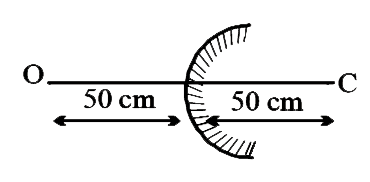
View SolutionA particle is moving at a constant speed V from a large distance towards a concave mirror of radius R along its principal axis. Find the speed of the image formed by the mirror as a function of the distance x of the particle from the mirror.
View SolutionA short linear object of length b lies along the axis of a concave mirror of focal length f at a distanee u from the pole of the mirror. The size of the image is approximately equal to
View SolutionThe relation between the linear magification `m`, the object distance `u` and the focal length `f` is
View SolutionAn object of length 1 cm is placed at a distance of 15 cm from a concave mirror of focal length 10 cm. The nature and size of the image are
View SolutionIn an experiment to determine the focal length `(f)` of a concave mirror by the `u-v` method, a student places the object pin A on the principal axis at a distance x from the pole P. The student looks at the pin and its inverted image from a distance keeping his/her eye in line with PA. When the student shifts his/her eye towards left, the image appears to the right of the object pin. Then,
View SolutionTwo plans mirrors are inclined to each other at some angle .A ray of light incident at `30^(@)`on one,after reflection form the other retraces its path .The angles between the mirrors is:
`30^(@) (2) 45^(@) (3) 60^(@) (4) 90^(@)`
View Solution9A convex mirror is used to form the image of an object. Which of the following statements is wrong ?
View SolutionA point source of light B is placed at a distance L in front of the centre of a mirror of width `d` hung vertically on a wall. A man walks in front of the mirror along a line parallel to the mirror at a distance 2L from it as shown in fig. The greatest distance over which he can see the image of the light source in the mirror is
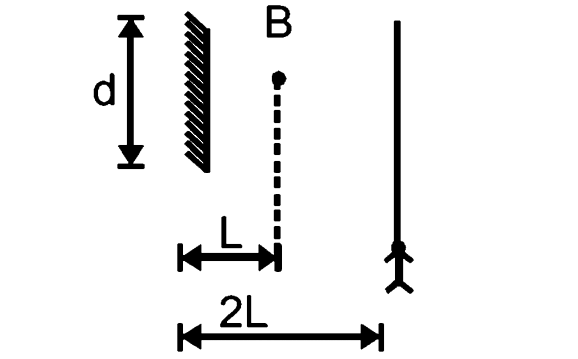
View SolutionA concave mirror of focal length `f` produces a real image `n` times the size of the object. What is the distance of the object from the mirror?
View SolutionThe focal length of a concave mirror is `30`cm.Find the position of the object in front of the mirror,so that the image is there times the size of the objects.
View SolutionA plane mirror reflecting a ray of incident light is rotated through an angle q about an axis through the point of incidence in the plane of the mirror perpendicular to the plane of incidence, then
(1) The reflected ray rotates through an angle 2q
(2) The incident ray is fixed
(3) The reflected ray does not rotate
(4) The reflected ray rotates through an angle q
View SolutionThe light reflected by a plane mirror will not form a real image
(1) If the rays incident on the mirror are diverging
(2) Under no circumstances
(3) If the object is real
(4) If the rays incident on the mirror are converging
View SolutionWhich of the following form(s) a virtual and erect image for all positions of the object?
(1) Convex lens
(2) Concave lens
(3) Convex mirror
(4) Concave mirror
View SolutionA plane mirror `(M_1)` and a concave mirror `(M_2)` of focal length 10 cm are arranged as shown in figure. An object is kept at origin. Answers the following questions. (consider image formed by single reflection in all cases).
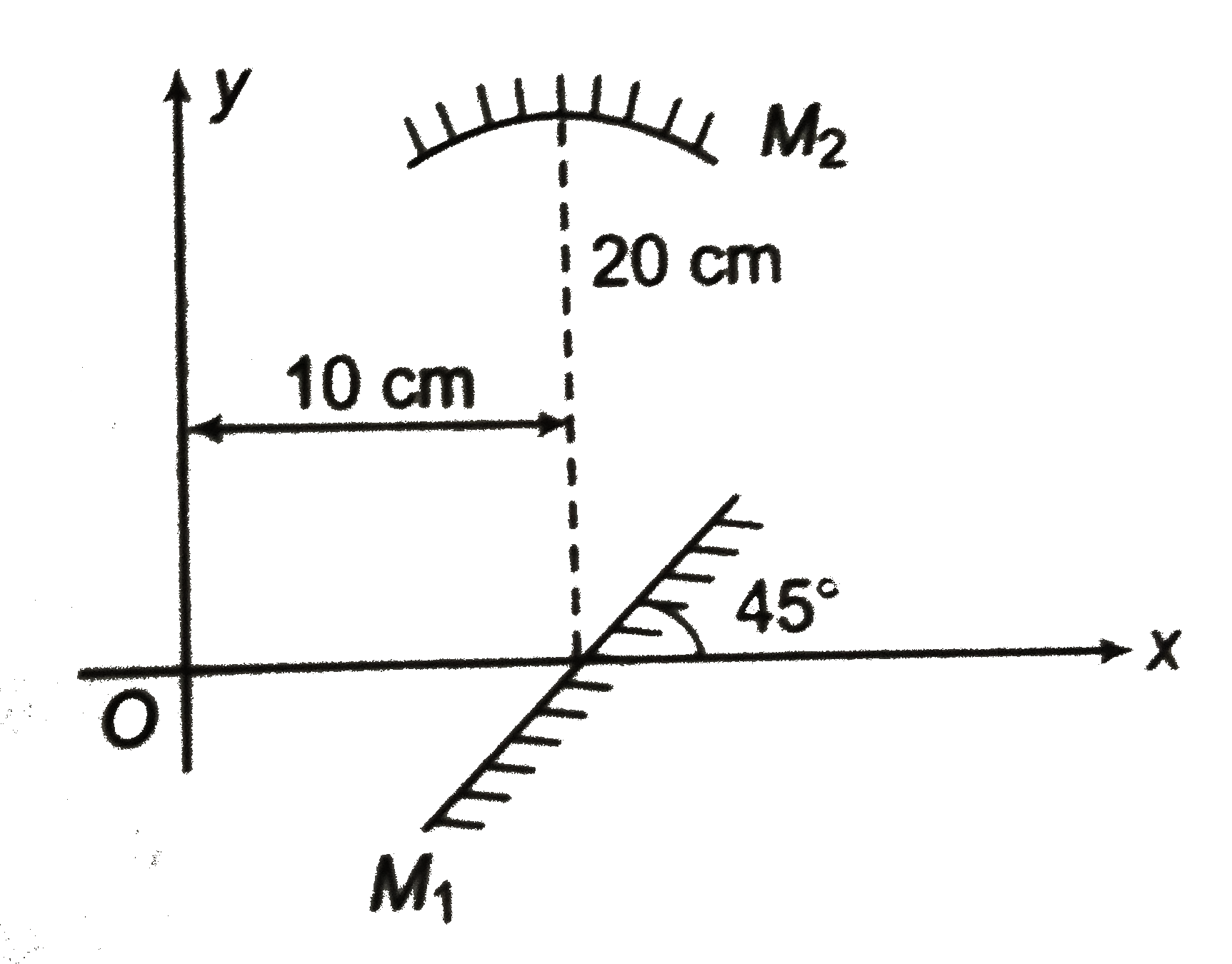
If concave mirror is replaced by convex mirror of same focal length then coordinates of image formed by `(M_2)` will be
View SolutionA plane mirror `(M_1)` and a concave mirror `(M_2)` of focal length 10 cm are arranged as shown in figure. An object is kept at origin. Answers the following questions. (consider image formed by single reflection in all cases).

If concave mirror is replaced by convex mirror of same focal length then coordinates of image formed by `(M_2)` will be
View SolutionAssertion `:` The mirrorrs used in search lights are parabolic and not concave spherical.
Reason `:` In a concave spherical mirrorr the image formed is always virtual.
View SolutionAssertion`:` When an objecct is placed between two plane parallel mirrorrs, then all the images found are of equal intensity.
Reason`:` In case of plane parallel mirrorrs, only two images are possible.
View SolutionAssertion `:` The size of the mirrorr affect the nature of the image.
Reason `:` Small mirrorrs always forms a virtual image.
View SolutionA small point object is placed at`O`at a distance of `0.60` meter in air from a convex spherical surface of refractive index`1.5`.If the radius of the curvature is `25 cm`then what is the position of the image on the principal axis.
View SolutionThe radius of a glass ball is 5 cm. There is an air bubble at 1cm from the centre of the ball and refractive index of glass is 1.5. The position of image viewed from surface near the bubble is.
View SolutionIn case of thin lens of focal length f an object is placed at a distance `x_(1)` from first focus and its image is formed at a distance `x_(2)` from the second focus, find `x_(1) x_(2)`
View SolutionWhat is the refractive index of material of a plano-convex lens , if the radius of curvature of the convex surface is 10 cm and focal length of the lens is 30 cm ?
View SolutionA convex lens of focal length 10.0 cm is placed in contact with a convex lens of 15.0 cm focal length. What is the focal length of the combination ?
View SolutionA `20 cm` convex lens is placed in contact with a diverting lens of unknown focal length ,The lens combination acts as a converging lens and has a length of`30 cm`.What is the focal length of the diverging lens.
View SolutionA pin is placed 10cm in front of a convex lens of focal length 20cm, made of a material having refractive index 1.5 . The surface of lens farther away from the pin is silvered and has a radius of curvature 22cm. Determine the position of the final image. Is the image real or virtual?
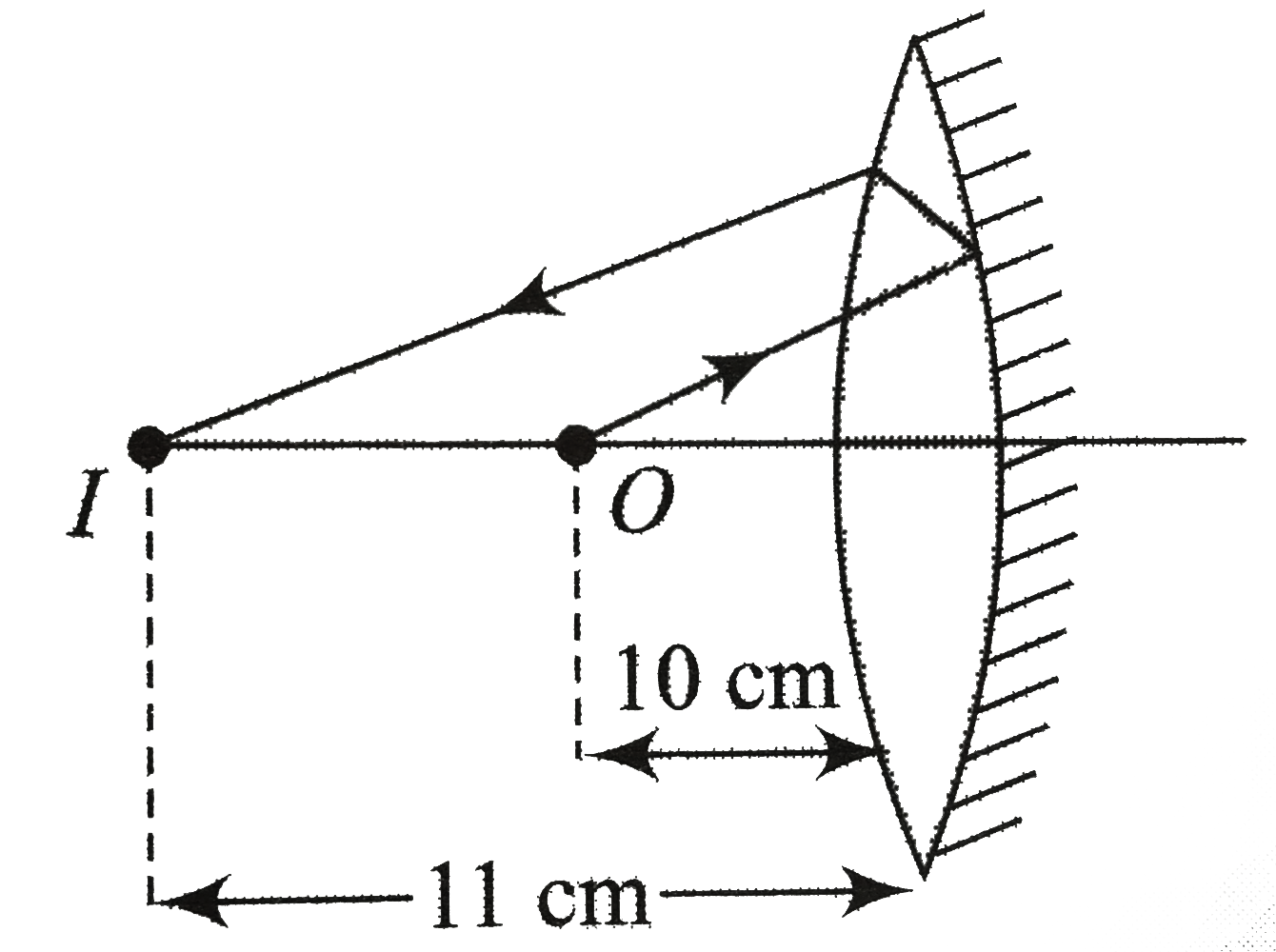
View SolutionA converging lens is used to form an image on a screen. When the upper half of the lens is covered by an opaque screen,
View SolutionA convex lens is made of a material having refractive index 1.2. Both the surface of the lens are convex. If it is dipped into water `(mu=1.33)` it will behave lidk
View SolutionAn equiconvex lens is made from glass of refractive index 1.5. If the radius of each surface is changed from 5cm to 6cm, then the power
View SolutionA convex lens when placed in the first position forms a real image of an object on a fixed screen. The distance between the object and the screen is 75 cm. On displacing the lens from first position by 25 cm to the second position, again a real image is formed on the screen. Then the focal length of the lens is
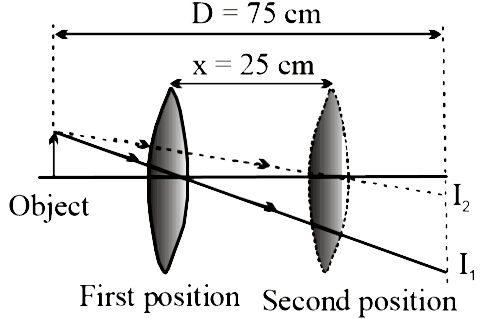
View SolutionA lens if placed between a source of light and a wall. It forms images of area` A_(1)` and `A_(2)` on the wall for its two different positions. The area of the source or light is
View SolutionA convex lens of power 4D is kept in contact with a concave lens of power 3D, the effective power of combination will be
View SolutionThe power of a plano-convex lens is P. If this lens is cut longitudinally along its principal axis into two equal parts and then they are joined as given in the figure. The power of combination will be :
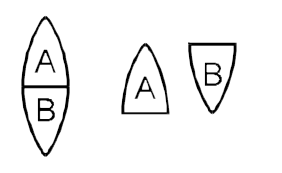
View SolutionThe plane surface of a planoconvex lens is silvered. If radius of curved surface is R and refractive index is `mu`, then the system behaves like a concave mirror whose radius will be
View SolutionCalculate the maximum magnifying power of a simple microscope consisting of a convex lens of focal length `5 cm`. Distance of distinct vision is `25 cm`.
View SolutionIn a compound microscope, the objective and eye piece have focal lengths `0.95 cm and 5 cm` respectively, and are kept at a distance of `20 cm`. The final image is formed at a distance of `25 cm` from the eye piece. Calculate the position of the object and the total magnification.
View SolutionResolving power of a microscope doesn't depend upon
(1) Velocity of light used
(2) Frequency of light used
(3) Focal length of objective
(4) Wavelength of light used
View SolutionAssertion `:` A double convex lens `(mu=1.5)` has focal length `10 cm`. When the lens is immersed in water `(mu=4//3)` its focal length becomes `40 cm`.
Reason `:` `(1)/(f)=(mu_(1)-mu_(m))/(mu_(m))((1)/(R_(1))-(1)/(R_(2)))`
View SolutionAssertion `:` The focal length of the lens does not change when red light is replaced by blue light.
Reason`:` The focal length of lens does not depends on colour of light used.
View SolutionAssertion ` :` By increasing the diameter of the objective of telescope, we can increase its range.
Reason `:` The range of a telescope tells us how far away a star of some standard brightness can be spotted by telescope.
View Solution
physics questions and complete solutions for chapter RAY OPTICS of DISHA PHYSICS (HINGLISH) of Class 12